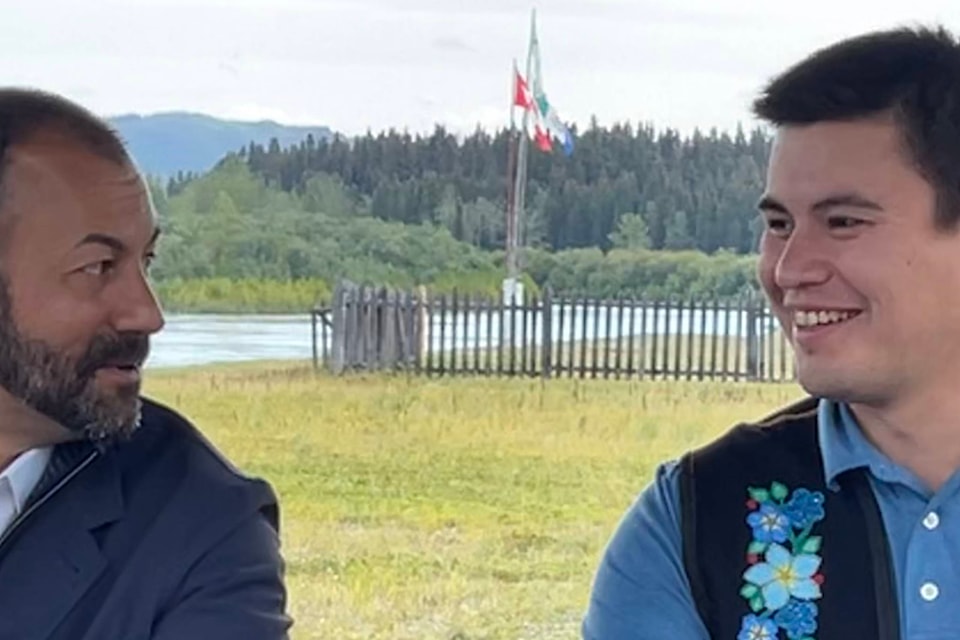The signing ceremony for the third Huchá Hudän / Fort Selkirk Historic Site Management Plan took place Aug. 21 on the Yukon River at Fort Selkirk. The new plan that was signed offers significant protection for the historic site.
Dignitaries were flown in, a media bus had been arranged and retired archaeologists and historians found their way back to a place that has always assembled a wide variety of people with diverging interests and attentions.
Over 100 people gathered on the high grassy flats across the Yukon River from where it meets the Pelly River.
Morris Morrison, deputy chief of the Selkirk First Nation, said that this is what makes Fort Selkirk special.
“Having the youth here and the elders join us from Pelly, and the significance of two ministers – this brings great balance to the occasion,” said Morrison, host of the ceremony. His grandmother translated his opening remarks into Northern Tutchone for him.
Morrison was joined by Ranj Pillai, the territory’s minister of tourism and culture, at the event. Jeanie McLean, the former minister of tourism and current minister of education was also in attendance. She had witnessed the past five years of collaboration on the management plan, and says that the “plan shows the maturity of the relationship that has been built over the last several decades.”
A formal process has been underway since 1982. The first co-management plan in 1990 preceded the Umbrella Final Agreement, and was later recognized in Chapter 13 of the Selkirk First Nation agreement. A second iteration occurred in 2000, outlining the next stage of management developments.
This third plan is significant in that it reflects official withdrawals from exploration and development, creating a much larger buffer area around the Fort Selkirk site to protect its edges into the future.
It also acknowledges the formal title change made in 2010 for the Yukon and First Nation governments as tenants-in-common.
In many ways, Fort Selkirk was positioned at the centre of the territory, but was bypassed by development. This is why, as Yukon historian Michael Gates wrote in 2014, that Fort Selkirk was spared the demolition associated with progress, and is why it survives as such a remarkable historical document today.
The management planning process, well-established by exemplary research, restoration and good relations, ensures that the vision of Huchá Hudän as a living cultural heritage experience is available for many generations.
Contact Lawrie Crawford at lawrie.crawford@yukon-news.com
